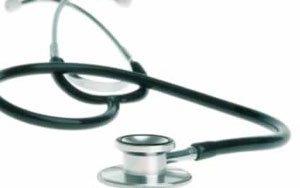 Practicing family physicians from the UNC Department of Family Medicine have teamed up with The Carrboro Citizen to bring you a weekly feature responding to your questions about health and medicine. Send your questions or comments to yourhealth@unc.edu
Practicing family physicians from the UNC Department of Family Medicine have teamed up with The Carrboro Citizen to bring you a weekly feature responding to your questions about health and medicine. Send your questions or comments to yourhealth@unc.edu
This week we respond to questions about lice and ADHD.
Dear HOUSE Calls, My daughter went to summer camp, and camp staff told me that there had been a lice outbreak. How will I know she has lice? What should I do? Are there any organic treatments?
Lice are very common. If she gets them, you will probably first notice a lot of scalp itching. Inspect her hair and scalp. If she has lice, you will probably see nits, which look like a tiny grain of sand adherent to the hair shaft near the scalp. You may even see some lice jumping. The mainstay of treatment is shampoo containing permethrin (Nix) or pyrethrum extract (Rid). These will kill the lice and interrupt the life cycle. The products come with a fine-tooth comb to remove the nits. We recommend you wash bedding and hats in hot water, run hairbrushes through the dishwasher and seal stuffed animals in a plastic bag for two weeks. You may need to re-treat in seven to 10 days. This treatment works fairly well, but re-infection is common. These critters run rampant in classrooms. Many schools have a “no nit†policy, but this does not prevent spread and results in absenteeism. There are a few organic options that may help. Coating the hair and scalp in Vaseline or Listerine will kill live lice (leave on for an hour). Also, coconut-scented shampoo and tea tree oil are lice repellants.
Dear HOUSE Calls, I think that my child has ADHD. How do I know for sure? How is ADHD best treated?
Attention deficit hyperactivity disorder (ADHD) is quite common, affecting about 7 percent of children. Predominant symptoms are trouble sitting still, acting on impulses and difficulty paying attention. Your child’s doctor can help you evaluate this concern. There are specific criteria that we use to diagnose ADHD. We like to gather feedback from caregivers and/or teachers in more than one setting, usually using standardized rating scales. A careful history, including family history, can be helpful. Also, understanding the child’s social environment is important. Sometimes difficulty at home can lead to acting out, which is easy to confuse with impulsivity. An interview with the child and a physical exam are key ingredients to the evaluation. The doctor should consider other psychiatric conditions (e.g., depression and anxiety) as well as medical conditions (e.g., lead poisoning, thyroid conditions, etc.) The two most common treatment strategies are medications, usually stimulants like Ritalin, and behavioral therapy. Behavioral therapy often comes in the form of individual and family therapy, academic- skills training and in-classroom academic support. It is key to work with your child’s teacher on establishing a diagnosis and planning treatment.
House Calls is a weekly column by Dr. Adam Goldstein, Dr. Cristy Page and Dr. Adam Zolotor on behalf of Your Health and the UNC Department of Family Medicine.
House Calls is a weekly column by Dr. Adam Goldstein, Dr. Cristy Page and Dr. Adam Zolotor on behalf of Your Health and the UNC Department of Family Medicine.

